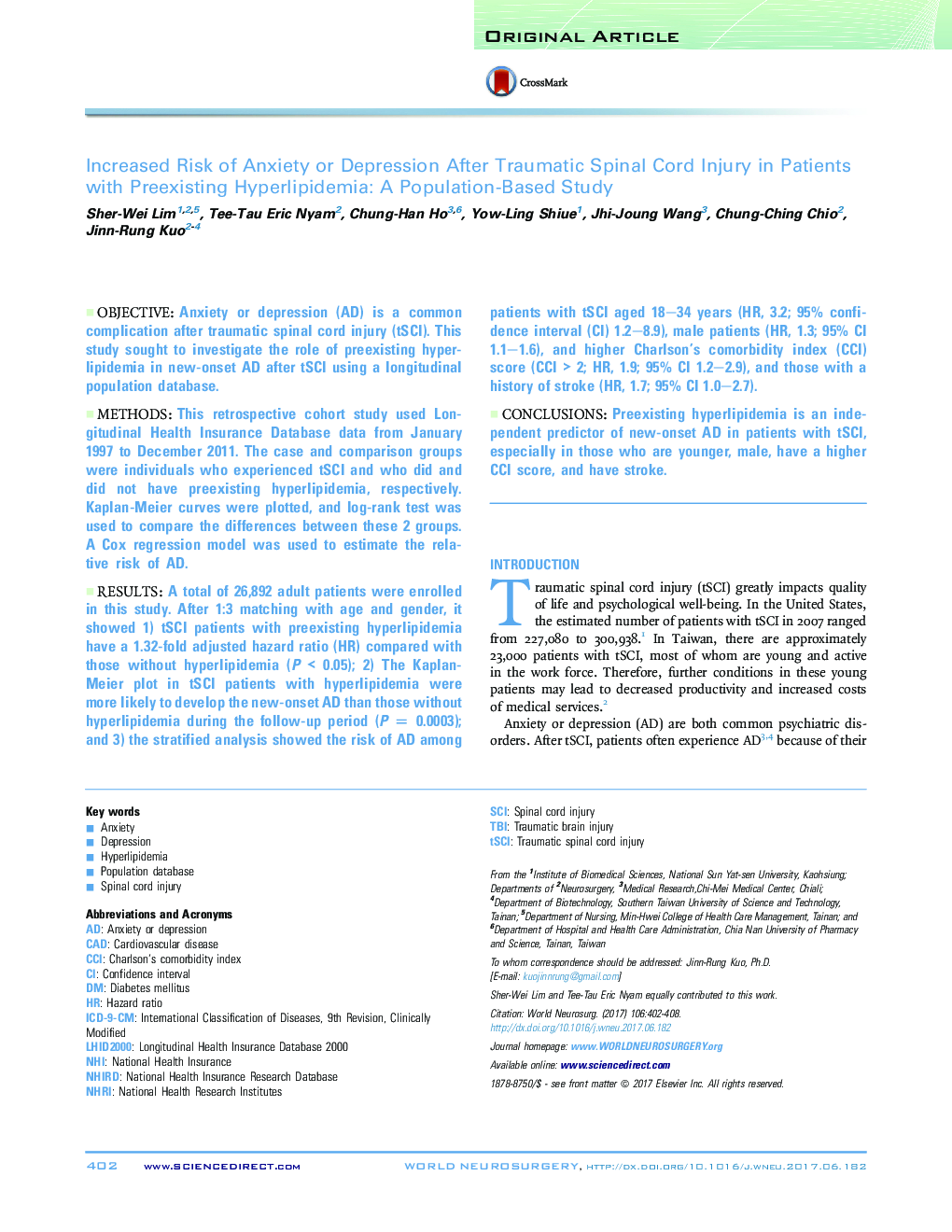| Article ID | Journal | Published Year | Pages | File Type |
|---|---|---|---|---|
| 5634003 | World Neurosurgery | 2017 | 7 Pages |
ObjectiveAnxiety or depression (AD) is a common complication after traumatic spinal cord injury (tSCI). This study sought to investigate the role of preexisting hyperlipidemia in new-onset AD after tSCI using a longitudinal population database.MethodsThis retrospective cohort study used Longitudinal Health Insurance Database data from January 1997 to December 2011. The case and comparison groups were individuals who experienced tSCI and who did and did not have preexisting hyperlipidemia, respectively. Kaplan-Meier curves were plotted, and log-rank test was used to compare the differences between these 2 groups. A Cox regression model was used to estimate the relative risk of AD.ResultsA total of 26,892 adult patients were enrolled in this study. After 1:3 matching with age and gender, it showed 1) tSCI patients with preexisting hyperlipidemia have a 1.32-fold adjusted hazard ratio (HR) compared with those without hyperlipidemia (P < 0.05); 2) The Kaplan-Meier plot in tSCI patients with hyperlipidemia were more likely to develop the new-onset AD than those without hyperlipidemia during the follow-up period (PÂ = 0.0003); and 3) the stratified analysis showed the risk of AD among patients with tSCI aged 18-34 years (HR, 3.2; 95% confidence interval (CI) 1.2-8.9), male patients (HR, 1.3; 95% CI 1.1-1.6), and higher Charlson's comorbidity index (CCI) score (CCI > 2; HR, 1.9; 95% CI 1.2-2.9), and those with a history of stroke (HR, 1.7; 95% CI 1.0-2.7).ConclusionsPreexisting hyperlipidemia is an independent predictor of new-onset AD in patients with tSCI, especially in those who are younger, male, have a higher CCI score, and have stroke.
